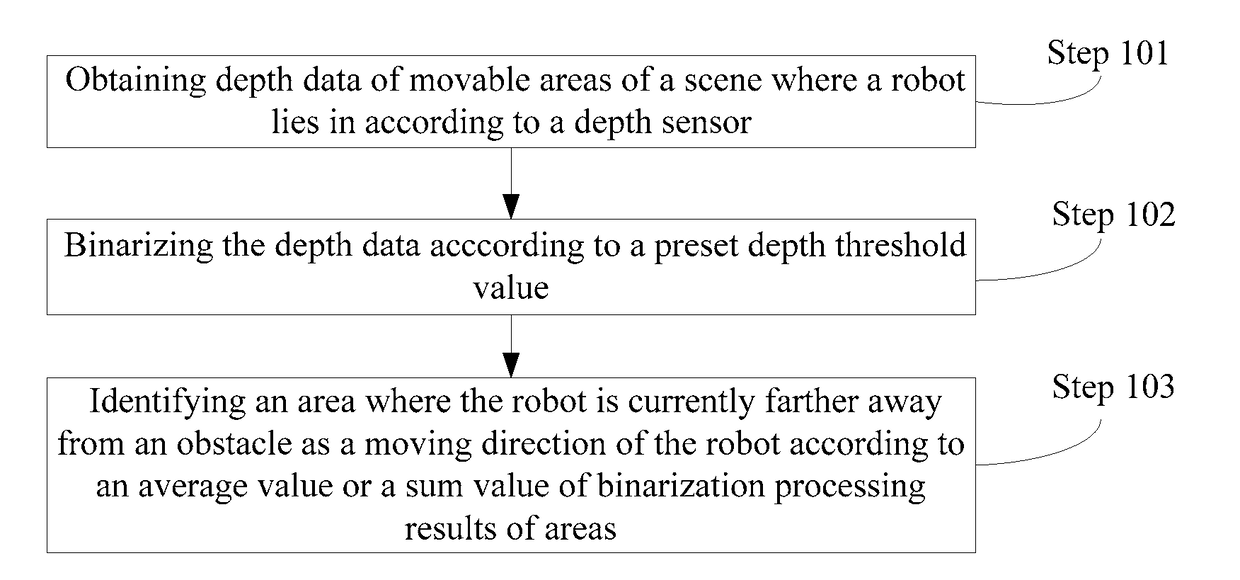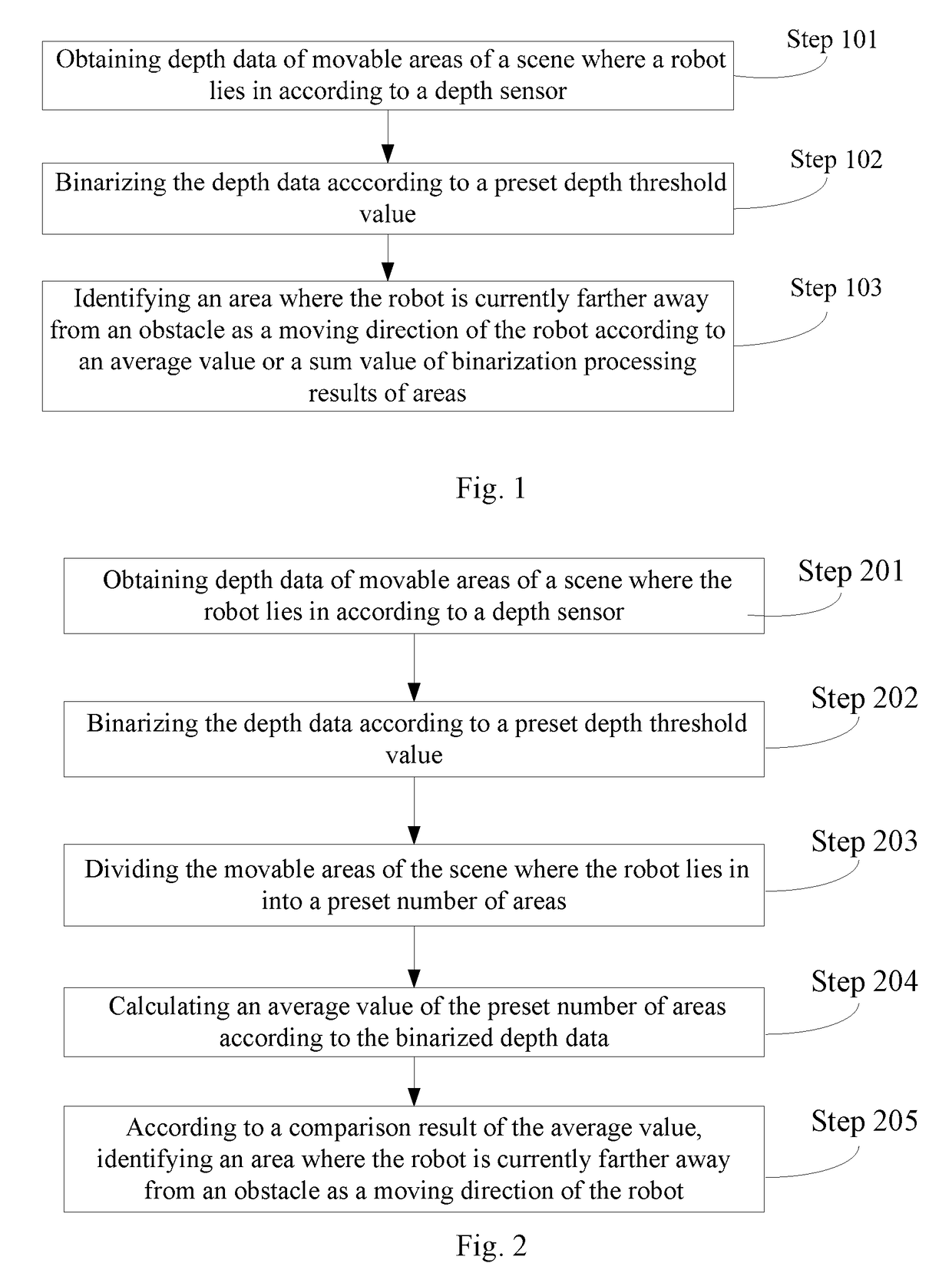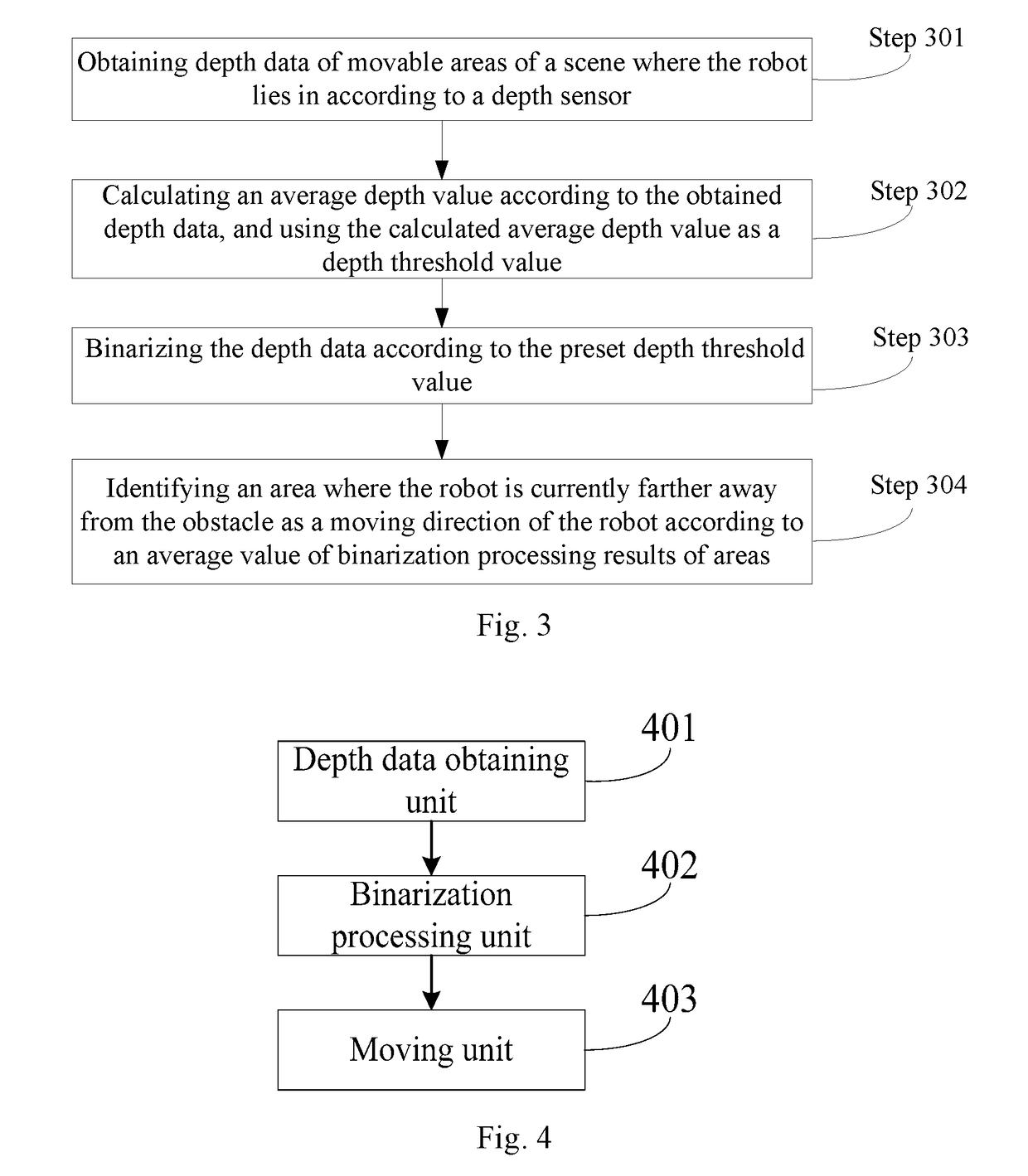Method and device for automatic obstacle avoidance of robot
a robot and automatic technology, applied in the field of robots, can solve the problems of high product cost of laser sensors, high requirement for systems, and inability to accurately avoid obstacles, etc., and achieve the effect of low requirement for systems, high product cost of robots, and low accuracy of obstacle avoidan
- Summary
- Abstract
- Description
- Claims
- Application Information
AI Technical Summary
Benefits of technology
Problems solved by technology
Method used
Image
Examples
embodiment i
[0046]FIG. 1 shows an implementation flow chart of a method for automatic obstacle avoidance of a robot provided by a first embodiment of the present invention, which is described in detail as follows:
[0047]In a step S101, according to a depth sensor, obtaining depth data of movable areas of a scene where the robot lies in.
[0048]Specifically, the depth sensor described in the embodiment of the present invention can be a 3D (three dimensional) sensor, for example, binocular cameras can be used to collect images respectively; according to preset parameters of the binocular cameras and difference information among the images, the depth data of objects in the images is obtained.
[0049]The movable areas of the scene where the robot lies in is actually a plane where the robot lies in, such as the plane where a sweeping robot lies in, that is, the ground where the robot is located; as for a window cleaning robot, it is actually a glass plane wherein the robot is located. The movable areas c...
embodiment ii
[0060]FIG. 2 illustrates an implementation flow chart of a method for automatic obstacle avoidance of a robot provided by a second embodiment of the present invention, which is described in detail as follows:
[0061]In a step S201, according to a depth sensor, obtaining depth data of movable areas of a scene where the robot lies in.
[0062]In a step S202, according to a preset depth threshold value, binarizing the depth data.
[0063]The steps S201-S202 in this embodiment of the present invention are substantially the same as the steps S101-S102 in the embodiment I, and are not repeatedly described herein.
[0064]In the step S203, dividing the movable areas of the scene where the robot lies in into a preset number of areas.
[0065]In this embodiment of the present invention, according to a current orientation of the robot, the movable areas can be divided into a plurality of areas averagely, for example, the movable areas can be divided into 11 areas, and each of the 11 areas comprises a certa...
embodiment iii
[0073]FIG. 3 illustrates an implementation flow chart of a method for automatic obstacle avoidance of a robot provided by a third embodiment of the present invention, which is described in detail in as follows:
[0074]In a step S301, according to a depth sensor, obtaining depth data of movable areas of a scene where the robot lies in.
[0075]In a step S302, according to obtained depth data, calculating an average depth value, and using the calculated average depth value as a depth threshold value.
[0076]Specifically, in order to make the robot be more self-adaptive to comparison requirements of depth values of different scenes, the present invention further comprises calculating the average value of the depth data in the scene where the robot lies in.
[0077]With respect to the average depth value described in this embodiment of the present invention, depth data of different angles can be selected by means of sampling to calculate the average value, and thus an efficiency of calculating an...
PUM
 Login to View More
Login to View More Abstract
Description
Claims
Application Information
 Login to View More
Login to View More - R&D
- Intellectual Property
- Life Sciences
- Materials
- Tech Scout
- Unparalleled Data Quality
- Higher Quality Content
- 60% Fewer Hallucinations
Browse by: Latest US Patents, China's latest patents, Technical Efficacy Thesaurus, Application Domain, Technology Topic, Popular Technical Reports.
© 2025 PatSnap. All rights reserved.Legal|Privacy policy|Modern Slavery Act Transparency Statement|Sitemap|About US| Contact US: help@patsnap.com



